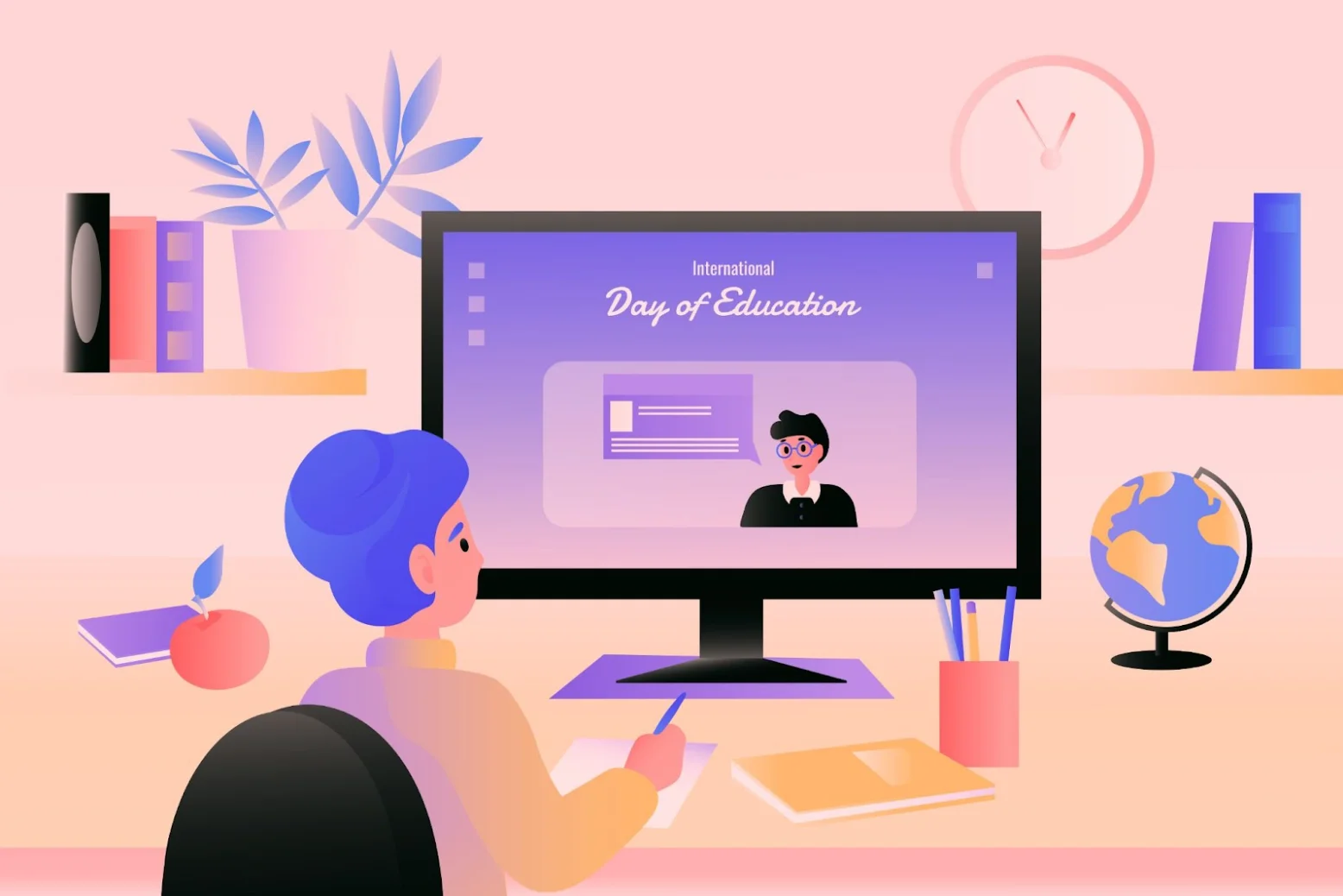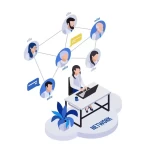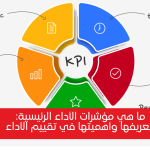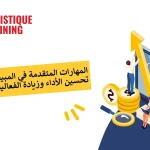Table of Contents:
- Introduction
- What Is Distance Learning?
- 6 Benefits of Distance Learning for Students
- 6 Benefits of Distance Learning for Teachers
- How to Implement Distance Learning Effectively
- Potential Cons of Distance Learning
- In-Person vs. Virtual Courses: Navigating Educational Choices
- Deciding If an Online Course Is Right for You
- Conclusion
Introduction
Education has evolved significantly in recent years, with distance learning emerging as a transformative approach to teaching and learning. This blog explores the dynamic landscape of distance learning, highlighting its benefits for both students and teachers, effective implementation strategies, comparisons with traditional in-person courses, and considerations for those contemplating online education.
What Is Distance Learning?
Distance learning, often referred to as online learning or e-learning, enables students to access educational content and instruction remotely, typically via the Internet. This mode of learning transcends geographical barriers, allowing individuals to pursue education without being physically present in a traditional classroom setting.
Table: In-Person vs. Distance Learning
6 Benefits of Distance Learning for Students
According to the eLearning Industry, online education has seen substantial growth since 2020. In 2019, the global eLearning market was valued at $200 billion. Considering the swift uptake of online learning, forecasts predict this market could expand to $400 billion by 2026. These projections highlight the significant benefits that online learning is expected to deliver for students in the future.
Flexibility and Convenience
Distance learning offers unparalleled flexibility, allowing students to customise their learning schedules around personal and professional commitments. Whether balancing a job, family responsibilities, or other activities, learners can access course materials and participate in discussions at times that suit their individual needs. This flexibility reduces stress associated with rigid schedules and empowers students to take ownership of their learning journey.
Access to Diverse Courses
One of the standout advantages of distance learning is its ability to transcend geographical boundaries, providing access to a vast array of courses and programs. Students no longer face limitations based on their location or local educational offerings. Instead, they can explore specialised subjects, niche fields, or advanced topics that may not be available at nearby institutions. This accessibility fosters a more inclusive educational environment where learners can pursue their academic passions and career aspirations more freely.
Cost-Effectiveness
Engaging in distance learning often proves to be more economical than traditional on-campus education. Beyond tuition fees, students can save significantly on commuting expenses, parking fees, and sometimes even textbook costs. Moreover, some online programs offer financial incentives or reduced rates for course materials, making higher education more affordable and accessible to a wider demographic of learners. For example, Drexel University provides students enrolled in online programs at its School of Education with a 25% tuition discount compared to regular rates. Additionally, many of the school's online programs qualify for financial aid.
Enhanced Learning Environment
For many students, the online learning environment offers a less intimidating setting than traditional classrooms. Through virtual platforms, learners can engage in discussions, ask questions, and contribute ideas more comfortably, often leading to increased participation and deeper learning experiences. The digital space also encourages innovative approaches to learning, such as multimedia presentations, interactive simulations, and collaborative projects, which can enhance comprehension and retention of complex concepts.
Skill Development
Distance learning cultivates essential skills that are increasingly valued in today's interconnected world. By navigating online platforms, students develop digital literacy, proficiency in utilising educational technologies, and effective time management skills. These competencies support academic success and prepare learners for professional environments where remote collaboration and digital communication are integral to career advancement.
Global Networking Opportunities
Through online education, students can connect with peers and educators from diverse cultural and geographical backgrounds. This global networking fosters cultural exchange, broadens perspectives, and enriches collaborative learning experiences. Virtual classrooms facilitate discussions that transcend borders, enabling students to gain insights into global issues, share diverse viewpoints, and develop interpersonal skills essential for navigating a multicultural society.
The benefits of distance learning for students extend far beyond convenience and accessibility. By embracing flexible learning schedules, accessing diverse educational opportunities, and developing crucial digital skills, learners can tailor their educational experiences to align with their individual goals and aspirations. As technology redefines the educational landscape, distance learning remains at the forefront, empowering students to thrive in a rapidly evolving global economy.
6 Benefits of Distance Learning for Teachers
Expanded Reach
Distance learning platforms enable educators to transcend traditional geographical boundaries, reaching a diverse global audience of students. Teachers can extend their impact beyond local communities and traditional academic settings by leveraging online teaching tools and virtual classrooms. This expanded reach not only enhances the visibility of their expertise but also allows educators to contribute to the educational advancement of students worldwide.
Flexible Teaching Options
Online learning platforms provide teachers with diverse tools and multimedia resources to enrich their teaching methods. Educators can create dynamic and engaging learning experiences that cater to different learning styles from interactive presentations and virtual labs to collaborative project spaces. The flexibility of online teaching enables instructors to experiment with innovative pedagogical approaches, such as flipped classrooms or gamified learning activities, fostering creativity and student engagement.
Professional Development
Online teaching cultivates valuable digital communication skills and familiarity with educational technologies. Teachers can refine their instructional strategies, adapt curriculum materials for online delivery, and incorporate emerging digital tools into their teaching practices. Continuous interaction with diverse student populations also enhances cultural competence and pedagogical adaptability, preparing educators to thrive in an increasingly interconnected educational landscape.
Innovative Pedagogical Approaches
Distance learning encourages educators to explore new teaching methodologies promoting active learning and retention. By integrating multimedia content, interactive simulations, and real-world case studies into their lessons, teachers can stimulate critical thinking and problem-solving skills among students. Virtual platforms support personalised learning experiences, allowing instructors to tailor educational content to meet each learner's unique needs and interests, thereby fostering a deeper understanding of the subject matter.
Work-Life Balance
Like students, teachers benefit from the flexibility of online teaching schedules, which accommodate personal and professional commitments. The ability to manage workload and instructional delivery remotely reduces the constraints of traditional classroom hours, promoting a healthier work-life balance for educators. This flexibility empowers teachers to allocate time more effectively between teaching responsibilities, professional development activities, and personal pursuits, contributing to overall job satisfaction and well-being.
Collaborative Teaching Opportunities
Online platforms facilitate collaboration among educators from various institutions and disciplines, fostering the exchange of best practices and educational resources. Teachers can participate in virtual communities of practice, share instructional strategies, and collaborate on curriculum development projects. Collaborative teaching initiatives enable educators to leverage collective expertise and innovative solutions, ultimately enhancing the quality of education delivered to students across diverse learning environments.
Distance learning empowers educators to embrace new possibilities in teaching and learning, leveraging technology to enrich educational experiences and expand professional horizons. By embracing flexible teaching options, nurturing innovative pedagogical approaches, and participating in collaborative teaching communities, teachers can inspire student success and contribute to the evolution of global education. As online learning redefines educational norms, educators play a pivotal role in shaping a future where learning is accessible, engaging, and transformative for students worldwide.
Table: KPIs of Teachers vs. Students to Leverage the Benefits of Distance Learning
How to Implement Distance Learning Effectively
Implementing distance learning effectively requires careful planning and consideration of various factors to ensure a seamless educational experience for both students and teachers. Here’s how to implement distance learning effectively:
1. Technology Infrastructure
A robust technology infrastructure forms the backbone of successful distance learning initiatives. Ensure that students have access to reliable internet connectivity and compatible devices (e.g., laptops, and tablets) to participate in online classes and access course materials. Choose user-friendly learning management systems (LMS) or virtual platforms that support interactive features such as video conferencing, discussion forums, and multimedia content delivery.
- Accessibility: Ensure accessibility features are in place for students with disabilities, such as screen reader compatibility and closed captioning for videos.
- Technical Support: Establish a dedicated helpdesk or technical support team to assist students and faculty with troubleshooting technical issues promptly.
2. Clear Communication
Establish clear guidelines, expectations, and communication channels to facilitate effective interaction between students and teachers:
- Course Syllabus: Provide a detailed course syllabus outlining learning objectives, assessment methods, and due dates for assignments.
- Communication Tools: Utilise email, messaging apps, and discussion boards within the LMS for regular communication and feedback.
- Office Hours: Schedule virtual office hours or synchronous sessions for students to ask questions and receive real-time assistance.
3. Engagement Strategies
Foster active engagement and participation among students through interactive learning activities and collaborative assignments:
- Multimedia Content: Incorporate multimedia elements such as videos, animations, and interactive simulations to enhance content delivery and retention.
- Discussion Forums: Encourage students to participate in online discussions, share perspectives, and engage in peer-to-peer learning.
- Group Projects: Facilitate group projects or virtual team activities that promote collaboration and problem-solving skills.
4. Assessment and Feedback
Develop fair and transparent assessment methods to evaluate student learning outcomes effectively:
- Formative Assessment: Use quizzes, polls, and short assignments throughout the course to gauge student understanding and provide timely feedback.
- Summative Assessment: Administer exams or final projects that assess comprehensive knowledge and skills acquired during the course.
- Feedback Mechanism: Provide constructive feedback on assignments and assessments promptly to guide students’ academic progress and improvement.
5. Professional Development
Equip faculty members with the necessary training and resources to transition to online teaching effectively:
- Training Programs: Offer workshops, webinars, or online courses on pedagogical strategies for distance learning and effective use of educational technologies.
- Peer Support: Establish peer mentoring programs where experienced online instructors can share best practices and mentor colleagues new to online teaching.
- Continuous Improvement: Encourage ongoing reflection and adaptation of teaching strategies based on student feedback and emerging trends in online education.
6. Support Services
Provide comprehensive support services to address the diverse needs of students participating in distance learning:
- Academic Advising: Offer virtual advising sessions to assist students with course selection, degree planning, and academic progress tracking.
- Counselling Services: Ensure access to online counselling services for students requiring emotional or academic support.
- Library Resources: Facilitate access to digital libraries, e-books, and online databases to support research and information retrieval.
Effective implementation of distance learning requires a collaborative effort to leverage technology, foster engagement, and support the academic success of students and faculty alike. By establishing a robust technology infrastructure, promoting clear communication, engaging students through interactive learning activities, implementing fair assessment practices, providing professional development opportunities for faculty, and offering comprehensive support services, educational institutions can create a dynamic online learning environment that empowers learners to thrive in today’s digital age. As distance learning continues to evolve, embracing best practices and innovative strategies will enable institutions to deliver high-quality education that is accessible, engaging, and conducive to student success.
Potential Cons of Distance Learning
While distance learning offers numerous benefits, it also presents some challenges that learners and educators should consider:
Limited Face-to-Face Interaction:
Online courses lack the in-person interaction found in traditional classrooms, which may impact some students' learning experiences. The absence of face-to-face communication can sometimes hinder social interaction, peer collaboration, and immediate feedback from instructors.
Technology Requirements and Access:
Effective participation in online courses requires reliable internet access and access to suitable devices. Technical issues such as connectivity problems or software compatibility issues can disrupt learning and frustrate students.
Self-Discipline and Time Management:
Online learning demands a high degree of self-discipline and time management skills. Without the structure of regular class meetings, students must proactively manage their study schedules, stay motivated, and meet assignment deadlines independently.
Perception and Credibility:
Despite growing acceptance, some employers and traditional educators may still question the credibility of online degrees compared to those earned through traditional on-campus programs. It's essential for students to choose accredited institutions and programs to ensure recognition and validity in their chosen field.
Isolation and Motivation:
Learning remotely can sometimes lead to feelings of isolation or detachment from the academic community. Students may miss out on networking opportunities, campus events, and the social aspect of learning that can enrich the overall educational experience.
While distance learning continues to revolutionise education by offering flexibility, accessibility, and global connectivity, weighing these benefits against potential challenges is essential. By understanding the drawbacks and proactively addressing them through technological support, enhanced communication strategies, and personalised learning experiences, institutions and students can maximise the benefits of distance learning while mitigating its limitations. At Holistique Training, we are dedicated to overcoming these challenges by providing accredited, interactive online courses that uphold the highest education standards. Visit Holistique Training to explore our different training formats and embark on a transformative educational journey tailored to meet your needs and aspirations.
In-Person vs. Virtual Courses: Navigating Educational Choices
While traditional in-person courses offer face-to-face interaction and immediate feedback, virtual courses through distance learning provide flexibility and accessibility. The choice depends on individual learning preferences, goals, and circumstances.
Deciding If an Online Course Is Right for You
Deciding whether an online course suits you involves considering several factors that align with your learning preferences, goals, and circumstances. Here’s how to determine if an online course is right for you:
1. Self-Motivation and Discipline
Online learning requires a high level of self-motivation and discipline to stay organised and keep up with coursework without the structure of regular in-person classes. Consider if you thrive in independent study environments and can manage your time effectively to meet deadlines and participate actively in online discussions.
- Time Management: Assess your ability to prioritise tasks and allocate sufficient time for studying, completing assignments, and participating in virtual class sessions.
- Goal Setting: Set clear academic goals and establish a study schedule that aligns with your personal and professional commitments.
2. Learning Style and Preferences
Reflect on how you learn best and whether online learning fits your preferred learning style:
- Visual vs. Auditory Learner: Determine if you prefer visual learning materials (videos, diagrams) or auditory instruction (lectures, podcasts).
- Interactive vs. Reflective Learner: Consider if you benefit from interactive activities (discussions, group projects) or prefer reflective learning through reading and independent study.
- Technology Skills: Evaluate your proficiency in using computers, internet browsers, and learning management systems (LMS) to access course materials and participate in online activities.
3. Access to Resources and Support
Assess the availability of resources and support services essential for your success in an online course:
- Technical Support: Ensure access to technical assistance for troubleshooting issues related to software, internet connectivity, and multimedia tools.
- Academic Support: Evaluate the availability of online tutoring, writing centres, library resources, and academic advising services to support your learning needs.
- Community and Networking: Consider if the online course provides opportunities for networking with peers, interacting with instructors, and accessing alumni networks or professional associations relevant to your field of study.
4. Cost and Affordability
Compare the cost of online courses with traditional on-campus programs, considering tuition fees, textbooks, commuting expenses, and potential savings:
- Financial Aid: Investigate if financial aid, scholarships, or tuition reimbursement programs are available to offset the cost of online education.
- Value Proposition: Evaluate the return on investment (ROI) of pursuing an online course in terms of career advancement opportunities, skill development, and personal enrichment.
5. Career Goals and Accreditation
Research the reputation of the institution offering the online course, accreditation status, and industry recognition of the program:
- Accreditation: Verify if the online course or program is accredited by recognized accrediting bodies in your country or region, ensuring that credits earned are transferable and recognized by employers or other educational institutions.
- Career Alignment: Determine if the online course aligns with your career goals, professional aspirations, and industry requirements for skill development and certification.
6. Personal Commitments and Lifestyle
Consider how an online course fits into your current lifestyle, personal commitments, and family responsibilities:
- Flexibility: Assess if the flexible scheduling of online courses accommodates your work schedule, travel commitments, and other personal obligations.
- Work-Life Balance: Reflect on whether online learning allows you to balance academic pursuits with family time, hobbies, and other activities important to your well-being.
Enrolling in an online course is a significant decision that requires careful evaluation of your readiness, preferences, and goals. By assessing your self-motivation, learning style, access to resources, financial considerations, career aspirations, and lifestyle compatibility, you can determine if online learning aligns with your educational needs and enhances your academic and professional success journey. As online education continues to evolve, embracing the benefits of flexibility, accessibility, and personalised learning experiences can empower you to achieve your learning objectives and thrive in a digital learning environment.
Conclusion
Distance learning represents a revolutionary shift in education, offering unprecedented opportunities for growth and collaboration. By leveraging flexibility, technology, and global connectivity, distance learning continues to redefine educational norms, making learning more inclusive and accessible than ever before. Whether you're a student looking for flexibility in your learning journey or a teacher eager to explore innovative teaching methods, embracing distance learning opens doors to new educational possibilities.
At Holistique Training, we are committed to excellence in education. As an accredited institution, we offer a diverse range of courses both in-person and online. Our interactive online courses utilise cutting-edge technology to enhance learning experiences, ensuring that students receive quality education from anywhere in the world. Explore our website to discover courses on various topics and consider obtaining well-known certifications that can propel your career forward. Join us in embracing the transformative power of distance learning to shape a brighter future for education globally.
Visit Holistique Training today to explore our courses and take the next step in your educational journey!



















